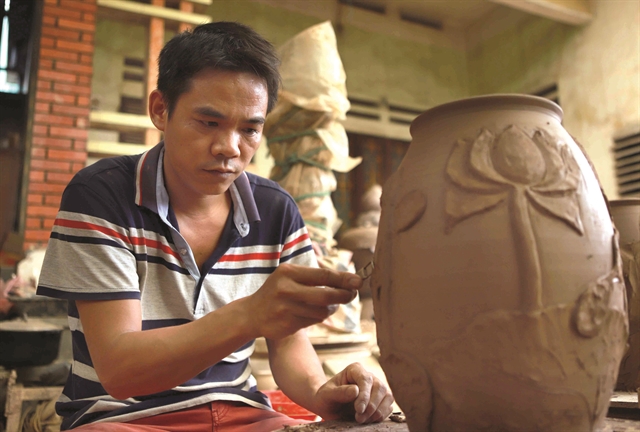
Aritisant Nguyễn Hồng Quang works on a ceramic jar. — VNA/VNS Photos Hoàng Hùng
Hương Canh ceramic village in Bình Xuyên District, Vĩnh Phúc Province has been famed for its products for more than 300 years.
Craftsmen at the village make various ceramic products like pots, jars and food containers of various sizes.
Legends have it that more than 300 years ago, after a war, mandarin Trịnh Xuân Biên of the Lê – Trịnh reign visited the site and realised how poor local people were.
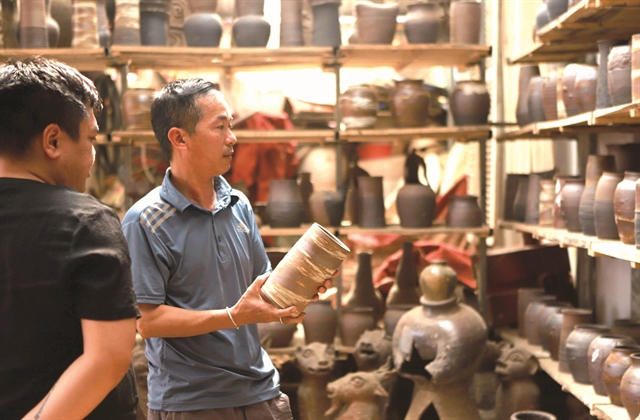
Customers choose products to buy at a local workshop.
He learned the local soil was suitable to making ceramics and he then taught locals how to farm and produce ceramic wares.
Though the ceramic handicraft trade in Viet Nam was born later in other villages, people like the simple products from Hương Canh due to the special local green clay that doesn't need a glaze but is still shiny and beautiful.
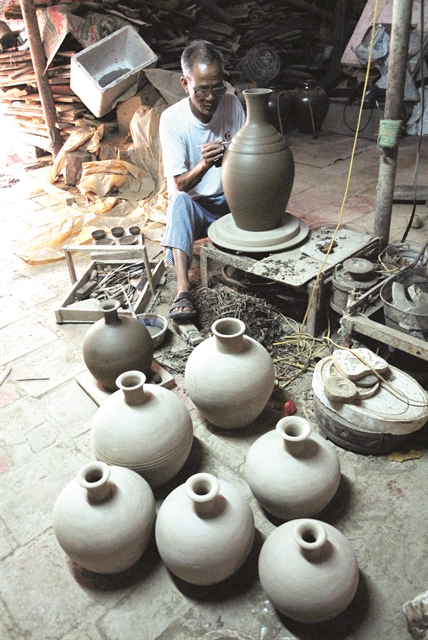
Only four families in the village still keep the handicraft.
Teapots made in Hương Canh can't keep water hot for a long time, but they do offer a sweeter taste thanks to the material.
Wine stored in Hương Canh jars tastes even stronger when stored for longer.
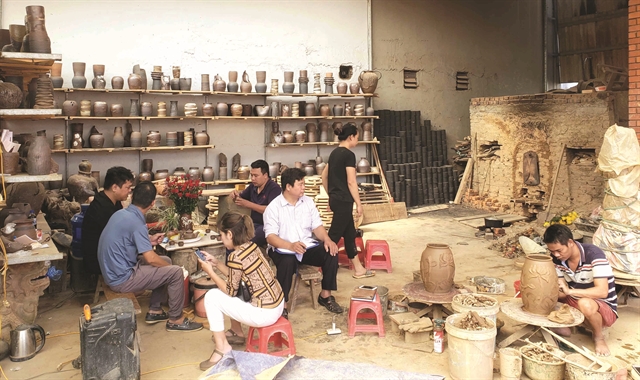
A busy workshop in the village.
Seeds stored in Hương Canh ceramic containers stay dry and almost never get mouldy.
Ceramic wares here are made from green clay, which is very soft. After being baked, the products are quite hard and make a chiming sound after being tapped by a hard object.
The products are finished with natural colours after being baked. Workers here never put glaze or enamel on the ceramic wares.
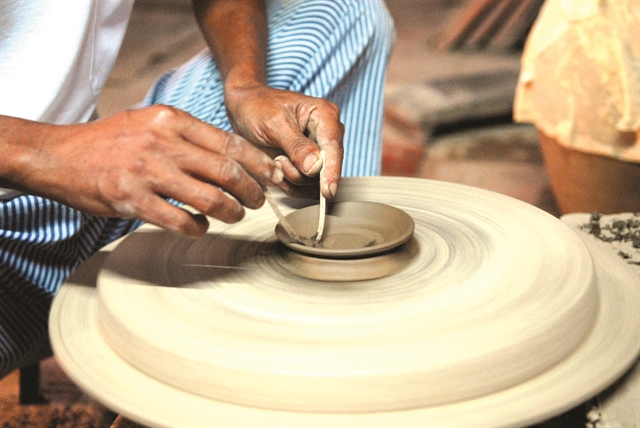
Ceramic wares in the vilage never get enameled. — VNA/VNS Photo Danh Lam
Nguyễn Văn Cự, an elder in the village, said the handicraft reached its peak in 1960s-70s when all the products were sold out.
Over time, more types of ceramic have entered the market so local production has sharply declined.
There are now only four families maintaining ceramic workshops while many others have switched to making tiles and bricks.
Roof tiles from the village are famed for their bright red colour and durability.
Visiting the village, one may be astonished as most of the fence walls in the village are made of pieces of tiles and ceramic wares which have been deemed substandard for sales and are taken for family use. — VNS
OVietnam